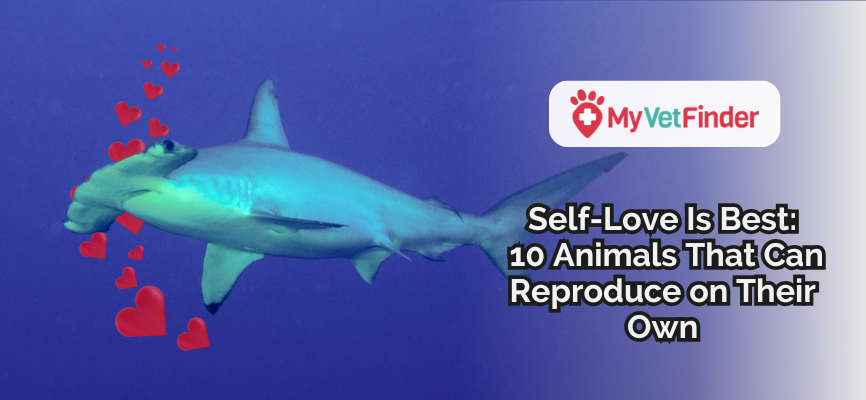
Self-Love Is Best: 10 Animals That Can Reproduce on Their Own

Love is in the air—but for some animals, romance isn’t necessary to keep their species going!
These remarkable creatures have mastered the art of asexual reproduction, a process where a single organism can create offspring without the involvement of another of its species.
While asexual reproduction offers certain benefits—like no need for a mate and rapid population growth—it also has its drawbacks, such as limited genetic diversity. Nonetheless, some animals have found ways to thrive through this extraordinary ability.
In this article, we’ll explore the fascinating world of asexual reproducing creatures and discover 10 animals that can propagate entirely on their own.
10 Animals That Can Reproduce on Their Own
1. Whiptail Lizards
The all-female New Mexico whiptail lizard has perfected the art of self-reproduction, thriving without the need for a mate while still maintaining genetic diversity. Unlike most asexual reproducers, their cells double the usual number of chromosomes, allowing for genetic variation even in the absence of sexual reproduction.
2. Marbled Crayfish
The marbled crayfish is a more recent discovery, known for its ability to clone itself. These little crustaceans are known to be able to produce offspring with no help from a mate. First discovered in a German pet store in 1995, these all-female crayfish reproduce through parthenogenesis, meaning every baby is an exact copy of its mother. Think of it as nature’s version of copy-paste!
3. Python
One of the most remarkable cases of asexual reproduction occurred in the Burmese python species. In 2012, Thelma, a 20-foot python at the Louisville Zoo, shocked scientists by laying 61 eggs—despite not having been around a male for two years. This marked the first recorded instance of a "virgin birth" in pythons. Genetic testing later confirmed that Thelma was the sole parent, and six of her babies hatched healthy—all of them female.
4. Sharks
Sharks might be known for their strength and agility, but they also possess the rare ability of parthenogenesis. The first recorded case of parthenogenesis in a cartilaginous fish happened in 2001 when a captive hammerhead shark, which had been isolated from males for at least three years, gave birth to a healthy female.
In 2017, a zebra shark named Leonie in Australia amazed researchers by giving birth to three baby sharks after five years without a mate. Now that’s strong and independent!
5. Komodo Dragons
Komodo dragons are another fascinating species capable of reproducing asexually. In 2006, a female Komodo dragon at England’s Chester Zoo shocked researchers by laying 11 eggs—despite never having met a male in her life. DNA tests confirmed that all the eggs carried only her genetic material, proving that these legendary lizards can reproduce through parthenogenesis.
6. Starfish
Sea stars take self-love to a whole new level with their incredible ability to reproduce through fission—literally breaking themselves in half to create a whole new starfish! Talk about a dramatic breakup.
Taking a slightly different approach to asexual reproduction, some species of starfish can regenerate and reproduce by splitting their bodies into two or more parts. Each new section can grow into a full starfish, making them experts in self-replication. Out of the approximately 1,800 starfish species, only 24 are known to have this special talent.
7. Wasps
These insects will make you forget about the birds and the bees!
Wasps can reproduce both sexually and asexually—research shows that 12.5% of females in a specific generation reproduced asexually. In these cases, females lay eggs fertilized by their own DNA, producing only more females. Now that’s a queen bee move (or in this case, a queen wasp move)!
8. Ants
Mycocepurus smithii, a fungus-farming ant, is one of the most successful asexual species, with entire colonies made up of female clones. A 2011 study examined over 1,900 of these ants from Latin America and found that in most populations, every single ant was an exact genetic copy of the queen—talk about keeping it in the family!
Other ants, like black carpenter ants, like to mix things up a bit. They reproduce both sexually and asexually, with fertilized eggs becoming female workers and unfertilized eggs developing into males. This unique reproductive strategy ensures the survival of the colony without the vital need for male ants.
9. Stick Insects
Depending on the situation, these interesting critters can reproduce either sexually or asexually. When they go the parthenogenesis route, all their offspring are female clones of the mother. However, at some point, they still need to mate to keep genetic diversity in the mix.
One of the best-known examples is the Indian stick insect, a popular pet that mostly reproduces without a mate.
10. Amazon Molly Fish
Image from Texas A&M
Native to Mexico and Texas, these freshwater fish have been rocking the single life for generations—literally. They’re an all-female species that reproduce exclusively through parthenogenesis, meaning no male has helped them reach their current population.
You’d think this lack of genetic diversity would spell trouble, but a 2018 study found that Amazon molly fish aren’t just surviving—they’re thriving. Their genome is surprisingly diverse, showing no signs of decay, making them a true testament to the power of self-sufficiency.
Who needs a Valentine when you have a rock-solid genetic game?
The Power of Self-Reproduction in Nature
Some animals don’t need a partner to reproduce! From sharks to ants, certain species create offspring entirely on their own through parthenogenesis, fission, or cloning. These fascinating survival strategies help them thrive and adapt to changing environments—offering valuable insights for conservation efforts.
Looking for a unique way to celebrate Valentine’s Day? Take a moment to appreciate nature’s self-sufficient superstars. Evolution certainly has some wild tricks up its sleeve!
Recent

June 18, 2025

May 09, 2025

May 02, 2025

April 25, 2025

March 31, 2025

